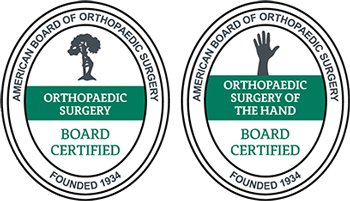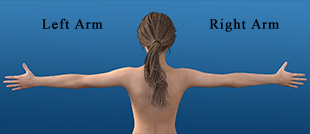What Causes an Ingrown Fingernail?
An ingrown nail occurs when the corner or side of the fingernail curves downward and the nail begins to grow into the skin. Ingrown nails can become red, swollen, and painful. They may even get infected. This is a common problem, and it can be extremely unpleasant, particularly if you have an ingrown nail on a finger that you use often for tasks like typing.
Understanding what causes ingrown nails is the first step toward preventing them. In some cases, you can stop ingrown nails at the source. If you can’t prevent the ingrown nail entirely, you can help resolve the problem more quickly with a prompt diagnosis and early home remedies. Here’s what you need to know about the causes of ingrown nails and what you can do about them.
Improper Nail Trimming
You should trim your nails straight across to keep them from becoming ingrown. If you must shape your nails, allow the nail to at least grow straight out until it’s past the folds of skin on either side of the finger. Beyond this point, it’s safer to shape your nails. Allow the nail to grow long enough to cover the tip of your finger. If you cut your nails too short, it’s easier for them to grow in the wrong direction or become infected.
Keep your fingernails clean and dry as much as possible. When you’re trimming your nails, take the time to gently clean beneath them as well. This will help clear out bacteria that can lurk there, waiting to cause an infection.
Nail Biting
Nail biting damages the shape and condition of the fingernails, increasing the likelihood of an ingrown nail. Your mouth may also carry bacteria that will increase the risk of infection should your nail become ingrown. People often bite their nails when they’re struggling with anxiety or attention-deficit hyperactivity disorder (ADHD). Addressing the underlying cause of your nail biting can help you understand how to quit. You can also try using bitter polish on your nails or wearing gloves to help you become more aware of your habit and make a mindful effort to stop it.
Finger Injury
If you’ve slammed your finger in a door or smashed it with a hammer, you may suffer more than just the initial pain. Certain finger injuries can temporarily change the shape of the nail and lead to an ingrown fingernail. If you’ve sustained this type of injury and suspect an ingrown nail is developing, start soaking the nail in warm water two or three times a day. This can help prevent an ingrown nail from forming.
Frequent Pressure
Ingrown nails are often related to the individual’s occupation. If you routinely engage in an activity that puts pressure on the nail, it’s more likely to curve unnaturally and become ingrown. For example, writing with a pen or pencil resting on or near the nail can reshape that nail and cause it to grow down into the skin. Typing, cutting vegetables, using certain hand tools, and sewing can also have this effect.
If you’re suffering from recurring ingrown nails in the same place, think about how you’re using your hands and see if you can identify the cause. Changing the way you work or using a more ergonomic tool may resolve the problem.
Fungal Infection
While a fungal infection often follows an ingrown nail, infection may also precede the problem. If you have any type of nail infection, you should speak with your doctor about the fastest treatment. Your doctor may prescribe a topical ointment or oral medication to resolve the infection. This can help you get rid of the infection before it leads to a more painful problem, like an ingrown nail.
Improperly Paced Growth
If your nails grow too fast or too slow, you’re at a higher risk for an ingrown nail. Fast nail growth is more likely in youth. Elderly adults usually experience slower nail growth, which can cause the same problem. This isn’t something that you can easily change, so you’ll simply need to stay more aware of nail care, cleaning, and maintenance to help prevent ingrown fingernails.
How To Treat an Ingrown Nail
Understanding what causes ingrown nails is just the first step to finding relief. As mentioned previously, soaking your hand in warm water several times a day for 10 to 20 minutes at a time will help soften the skin so the nail can work its way out. Try adding Epsom salts to the water for greater pain relief.
After a good soak, you should find it easier to gently lift the nail from its place in the skin. This will relieve pressure and encourage proper growth. Apply an antifungal or antibiotic ointment to help prevent infection. You can place a small piece of wet cotton or dental floss beneath the nail to keep it from sinking back into the skin. Wrap a bandage loosely around the nail to keep it clean. You can take ibuprofen or acetaminophen for pain relief.
If the above methods don’t resolve the ingrown nail, you may need to seek medical attention. You should see a doctor immediately if you have signs of a nail infection like:
- Fever or chills.
- Body aches.
- Red streaks on your skin.
- Pus or fluid leaking from the nail.
- Extreme pain from the ingrown nail.
- Redness and severe inflammation.
You should also speak with your doctor about an ingrown nail if you are immunocompromised or diabetic. Do not attempt any home treatment. These conditions can cause further complications with ingrown fingernails.
Professional Medical Treatment for Ingrown Nails
If you have an infected or severely ingrown nail, you may need surgical treatment. This typically involves removing part of the nail. Your hands are crucial to your everyday activities, so it’s important to take good care of them. Our specialists at The Hand and Wrist Institute can provide expert care for any type of hand or nail problem. Contact us today to schedule an appointment and learn more.

























